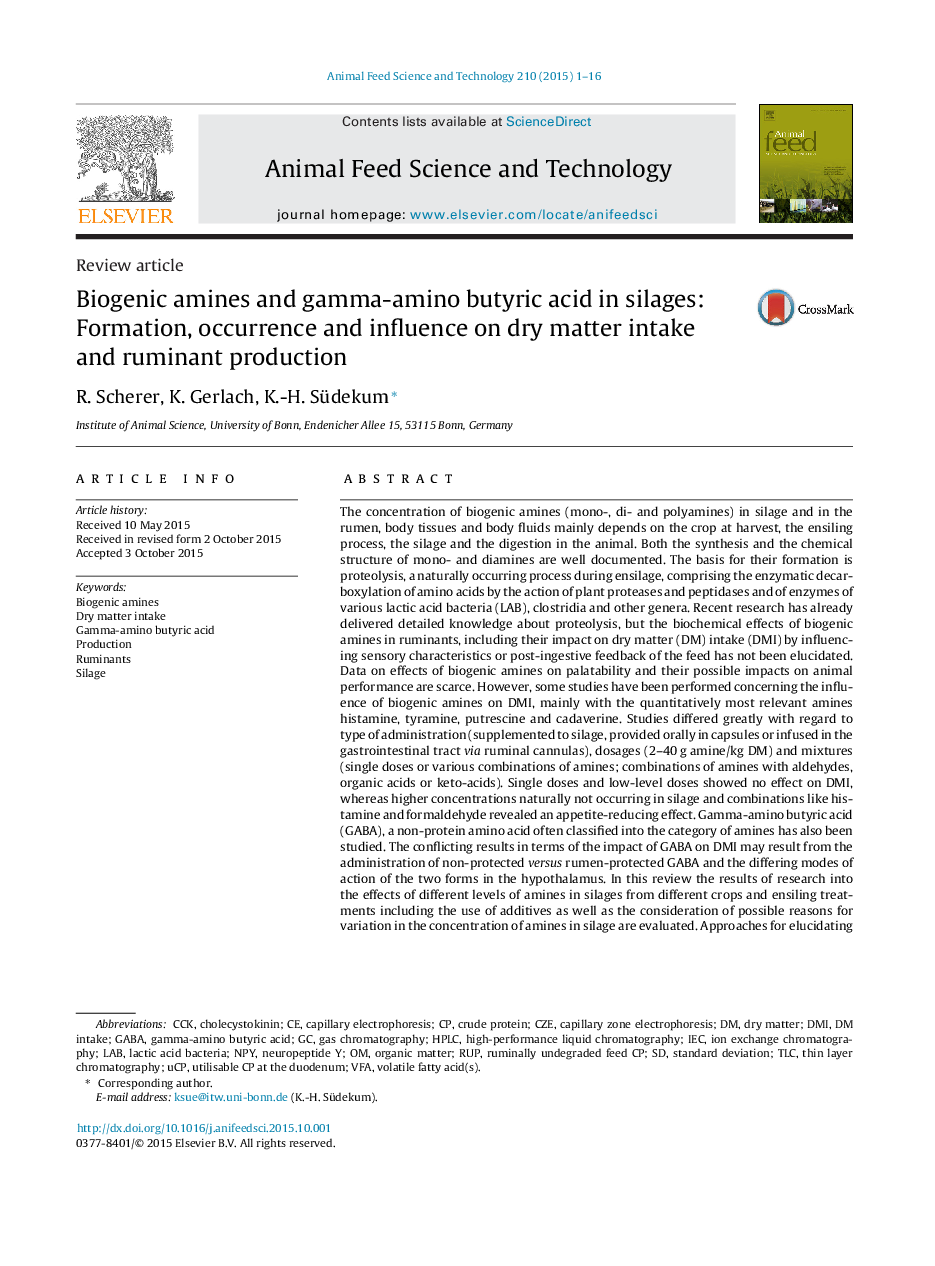| کد مقاله | کد نشریه | سال انتشار | مقاله انگلیسی | نسخه تمام متن |
|---|---|---|---|---|
| 2419310 | 1552375 | 2015 | 16 صفحه PDF | دانلود رایگان |
• Amine-levels in silages from different crops and varying pre-treatments were evaluated.
• Amines might have an impact on dry matter intake and preference of ruminants.
• Rumen-protected and non-protected amines showed contrasting effects on feed intake.
• We propose to include amines more frequently in the standard forage analysis.
• Reduction of proteolysis is essential to ensure high quality silage.
The concentration of biogenic amines (mono-, di- and polyamines) in silage and in the rumen, body tissues and body fluids mainly depends on the crop at harvest, the ensiling process, the silage and the digestion in the animal. Both the synthesis and the chemical structure of mono- and diamines are well documented. The basis for their formation is proteolysis, a naturally occurring process during ensilage, comprising the enzymatic decarboxylation of amino acids by the action of plant proteases and peptidases and of enzymes of various lactic acid bacteria (LAB), clostridia and other genera. Recent research has already delivered detailed knowledge about proteolysis, but the biochemical effects of biogenic amines in ruminants, including their impact on dry matter (DM) intake (DMI) by influencing sensory characteristics or post-ingestive feedback of the feed has not been elucidated. Data on effects of biogenic amines on palatability and their possible impacts on animal performance are scarce. However, some studies have been performed concerning the influence of biogenic amines on DMI, mainly with the quantitatively most relevant amines histamine, tyramine, putrescine and cadaverine. Studies differed greatly with regard to type of administration (supplemented to silage, provided orally in capsules or infused in the gastrointestinal tract via ruminal cannulas), dosages (2–40 g amine/kg DM) and mixtures (single doses or various combinations of amines; combinations of amines with aldehydes, organic acids or keto-acids). Single doses and low-level doses showed no effect on DMI, whereas higher concentrations naturally not occurring in silage and combinations like histamine and formaldehyde revealed an appetite-reducing effect. Gamma-amino butyric acid (GABA), a non-protein amino acid often classified into the category of amines has also been studied. The conflicting results in terms of the impact of GABA on DMI may result from the administration of non-protected versus rumen-protected GABA and the differing modes of action of the two forms in the hypothalamus. In this review the results of research into the effects of different levels of amines in silages from different crops and ensiling treatments including the use of additives as well as the consideration of possible reasons for variation in the concentration of amines in silage are evaluated. Approaches for elucidating the possible impact on ruminant feed intake and level of production are also discussed. For an overall understanding of amine formation during ensilage further investigations with emphasis on correlations between the impact of ensiling and storage conditions and extent of amine formation are recommended to reveal relations between cause and effect.
Journal: Animal Feed Science and Technology - Volume 210, December 2015, Pages 1–16
